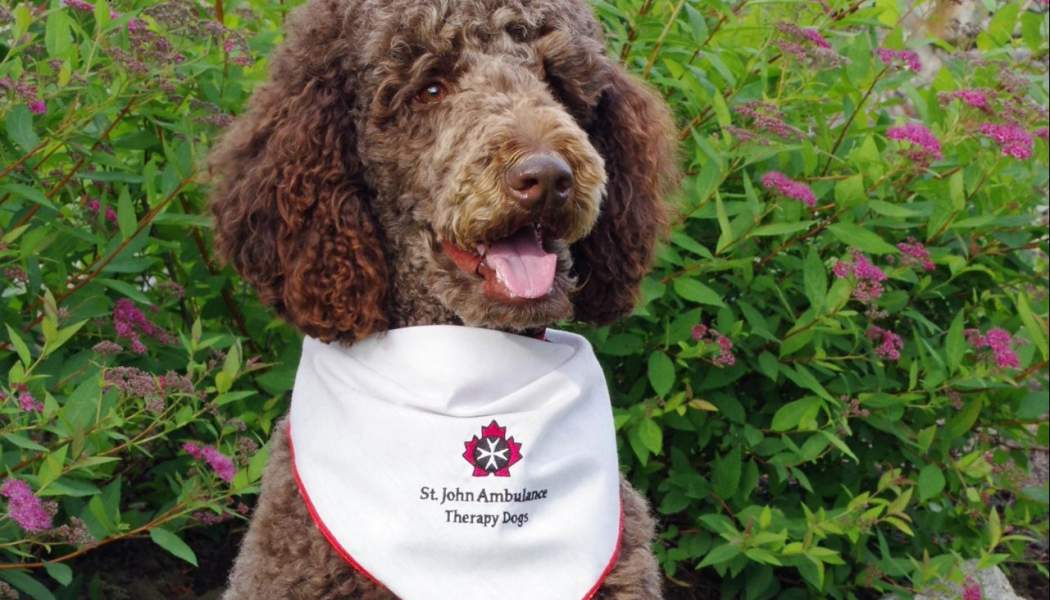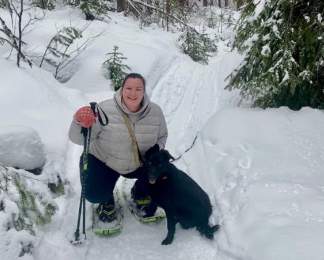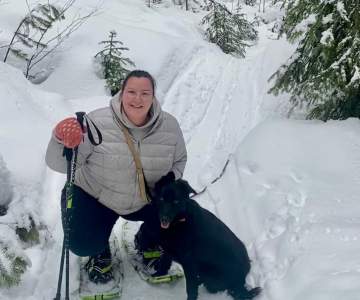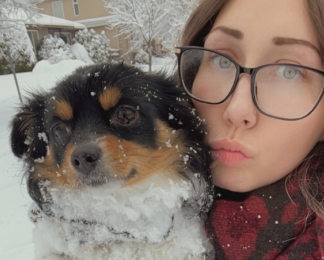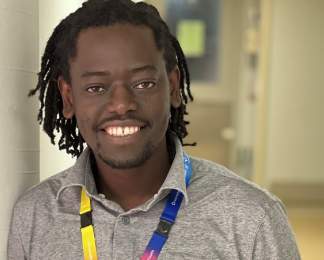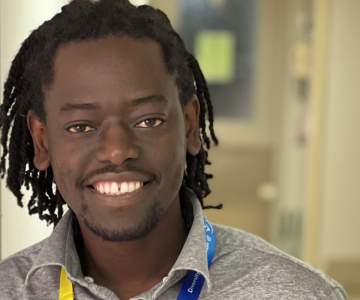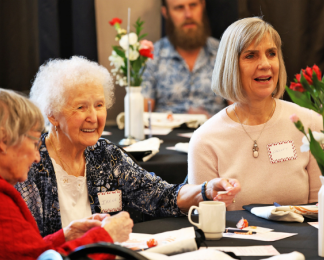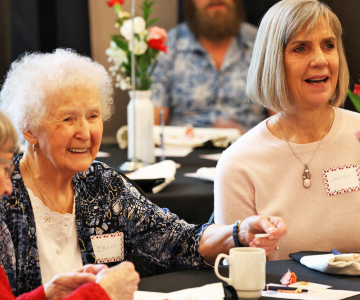While Merle Crawford was in palliative care at Royal Inland Hospital (RIH), the former pediatric nurse did her best to remain bright and cheerful.
But there were days when it was a struggle; times when she needed someone to cheer her up.
Enter Saylor the therapy dog.
Saylor brought a bright smile to Merle’s face, and to her family’s, when he appeared in the room.
“The day Saylor went up to her bed, and she was able to pet him, brought her such joy,” says Merle’s daughter Cathie. “As we watched her face light up, our family could only say…thank-you Saylor.”
Visits like that are old hat for Saylor the therapy dog since joining the St. John’s Ambulance team of about 60 therapy dogs in Kamloops. Saylor and his brother Tenor have helped many patients through tough times, visiting with young and old when they work at RIH.
Arriving at the hospital on one of their typical visits, the two pure-bred poodles begin their day with a trip down RIH’s main hallway, along with their handlers, brothers Don and Greg Garrish. They touch many lives along the way, greeting people in the hallways and travelling to various units including pediatrics, psychiatry, physiotherapy, cardiac care and orthopedics, to name just a few.
One of Saylor’s favourite places is the stroke and rehab clinic.
“He enjoys spending time with people who are relearning how to walk and talk, and sometimes snuggles with a patient he has been visiting for a number of weeks,” says Don. “The rehab unit even keeps an extra dog leash on hand so patients can help walk Saylor around the floor.”
Saylor and Tenor make special visits to intensive care and also receive other special requests for visits.
Unfortunately, the dogs can’t be at the hospital every day. But now, with some innovative thinking, Saylor’s soothing skills are available even when he’s not able to physically be there thanks to “nurse call” technology that allows quick voice calls between caregivers.
If a patient is in distress and a therapy dog can help, the nurse can simply press a button and say ‘call Saylor the hospital therapy dog’ and the patient will hear a series of pre-recorded barks along with a message wishing them well.
The idea came to Saylor’s handler Don one day at the hospital as he was visiting pediatrics. A staff member approached Don and said she wished Saylor could have been there the previous night to help with a patient.
Familiar with the nurse-call technology from his volunteer work in intensive care and with the patient and family advisory council, a lightbulb came on.
“I realized we could put Saylor on the nurse-call system and he would be available whenever he was needed,” says Don. “I think this is very unique in a Canadian hospital setting.”
The response from staff was immediate and positive.
The idea received support from the patient and family advisory council and hospital administration. Director of Clinical Operations, Meagan Hanson has witnessed firsthand the positive work of the therapy dog program and says it was an easy decision to support.
“Having the therapy dogs coming to RIH has become such a wonderful part of our patient care. The dogs are amazing with the patients and with our staff,” says Meagan. “We’re excited to expand the program and include Saylor on nurse-call. This is a great way to provide patients with emotional support.”
People like Merle have benefitted greatly from this new tool.
“Saylor’s visit brought a measure of comfort and happiness to our mother and our family,” says her daughter Cathie. “It was in keeping with the spirit of compassionate care provided by the health-care team at RIH and much appreciated by all of us.”
For now, RIH staff can access Saylor’s greeting with several barks and a message wishing the patient well. But more barks are coming soon, including a Valentine’s Day greeting along with other special messages.
Listen to Saylor's valentine greeting
“We are constantly looking for ways to enhance patient care,” says Meagan. “Our staff and physicians do a tremendous job each and every day. Having Saylor’s voice handy just gives us one more avenue to help patients.”


